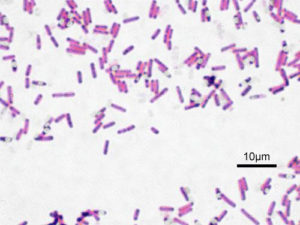Most of us are aware that the human body is covered by and full of microorganisms. And we understand that most of these microorganisms are helpful, both in terms of competition with and protection against invading microorganisms, and in the gut, as agents of digestion.

In the past decade, however, research has brought compelling details implicating gut microbes in obesity, cancer, insulin resistance and such central nervous system disorders as depression, austism spectrum disorder and multiple sclerosis (Adnan, S. et al.). Yet the mechanisms and details of these associations have not been fully demonstrated.
Gut microbes have been proven to be connected to thickening of heart vasculature, known as atherosclerosis. Researchers have demonstrated that bacteria metabolize choline and L-carnitine from food to trimethylamine, which crosses the gut barrier into circulation and reaches the liver. In the liver, trimethylamine is metabolized to the atherogenic molecule triethylamine-N-oxide (Gregory, J.C. et al., Brown and Hazen). These studies are among the few that provide a direct connection between gut microbes and a pathological condition.
In a recently published study, scientists have used a rat model of hypertension to demonstrate that changes in gut microbiota can induce hypertension. Here is a brief report of that work.
Animal Model of Hypertension
The researchers used a well-known animal model for hypertension, the Spontaneously Hypertensive Rat (SHR). This rat strain was developed by breeding Wistar-Kyoto rats (WKY) with high blood pressure. It was previously noted that SHR demonstrate gut dysbiosis compared to their WKY rat relatives. WKY rats were also used in this study.
The authors postulated that the dysbiosis and resultant hypertension could be introduced in non-hypertensive rats by controlling the gut flora.
Changing the Gut Microbiota
The researchers collected colon and cecal contents from SHR, pooled and resuspended the contents in sterile PBS. Samples were then centrifuged and the supernatants stored at –80°C. Cecal and colon contents from WKY rats were similarly processed and stored.
Study rats, both SHR and WKY, were first treated daily for 10 days with a broad spectrum antibacterial/antifungal cocktail to reduce native microbiota and improve chances of colonization with newly introduced flora. The researchers then performed qPCR analysis of 16S rRNA gene to ensure that the antibiotics had a similar effect on the microbiota of the two rat strains. 16SrRNA gene copy number did not differ significantly for microbiota between the two rat types.
Two days after antibiotic treatment was completed, the cecal/colon contents were administered to the rat groups by gavage as follows:
- WKY rats, post antibiotic cocktail, were treated with either: 1)WKY cecal/colon suspension or 2) SHR cecal/colon contents.
- A control group of WKY rats was given 3) PBS instead of antibiotics, and PBS instead of cecal/colon suspension. Cecal/colon suspension, PBS and pretreatment with antibiotics was administered to respective rat groups by gavage.
- The same three treatments were administered to SHR.
Monitoring Blood Pressure in Rats
Tail-cuff measurement of systolic blood pressure, was monitored every 7–10 days for 7 weeks in the rats. Importantly, researchers acclimatized rats to this monitoring over a two-week period prior to the study.
The Results
The researchers saw, in WKY rats, a significant increase in systolic blood pressure for rats given SHR contents over WKY rats given WKY suspensions. However, they did not see a significant decrease in systolic blood pressure for SHR rats that received cecal contents from WKY rats over SHR rats given SHR contents.
They further noted when studying the Firmicutes:Bacteriodetes (F:B) ratio in these rats, that the WKY rats given SHR suspension showed a significant increase in F:B ratio. Increased F:B is an established marker of gut dysbiosis and has been associated with multiple pathologies (Mahowald, M.A. et al.). The authors noted that they were successful in switching the gut microbiota of WKY rats, but not successful in a parallel transfer of microbiota to the guts of SHR.
However, this report is the first to demonstrate that transfer of gut microbiota can produce increased blood pressure in rats that are normally not hypertensive, and thus a causal role for certain gut microbiota in the induction of hypertension.
For more details on the interesting findings in this study and their interpretation, here is the paper:
Adnan, S. et al. (2016) Alterations in the gut microbiota can elicit hypertension in rats. Physiological Genomics, PMID 28011881.
Related Posts
Kari Kenefick
Latest posts by Kari Kenefick (see all)
- Fluorescent Ligands in Biological Research: Where We’ve Been, Where We’re Headed - June 27, 2024
- Cell-Based Target Engagement and Functional Assays for NLRP3 Inhibitor Profiling Help Identify Successes and Failures - January 25, 2024
- Illuminating the Brain with a New Bioluminescence Imaging Substrate - April 13, 2023
